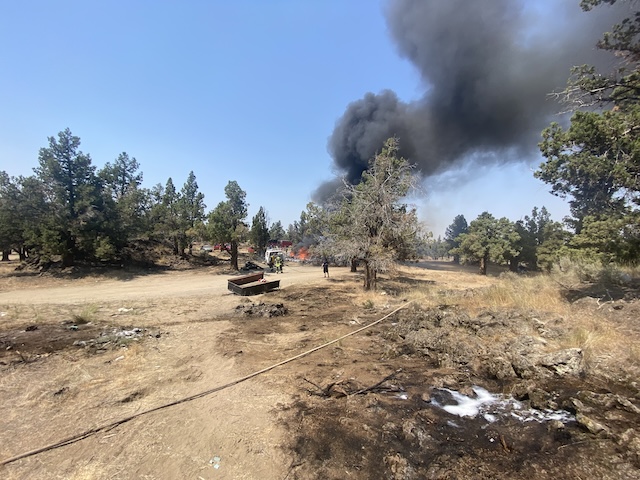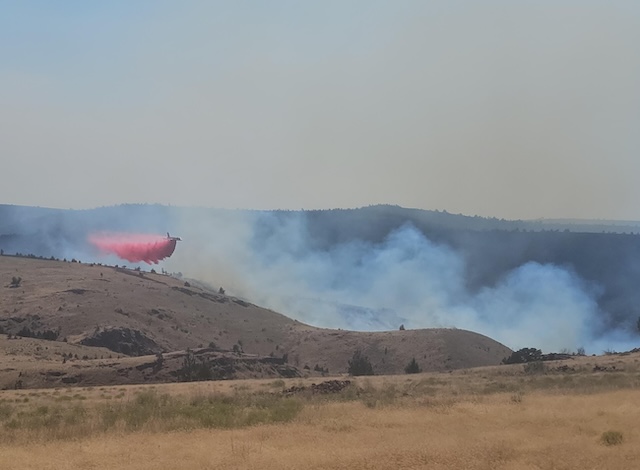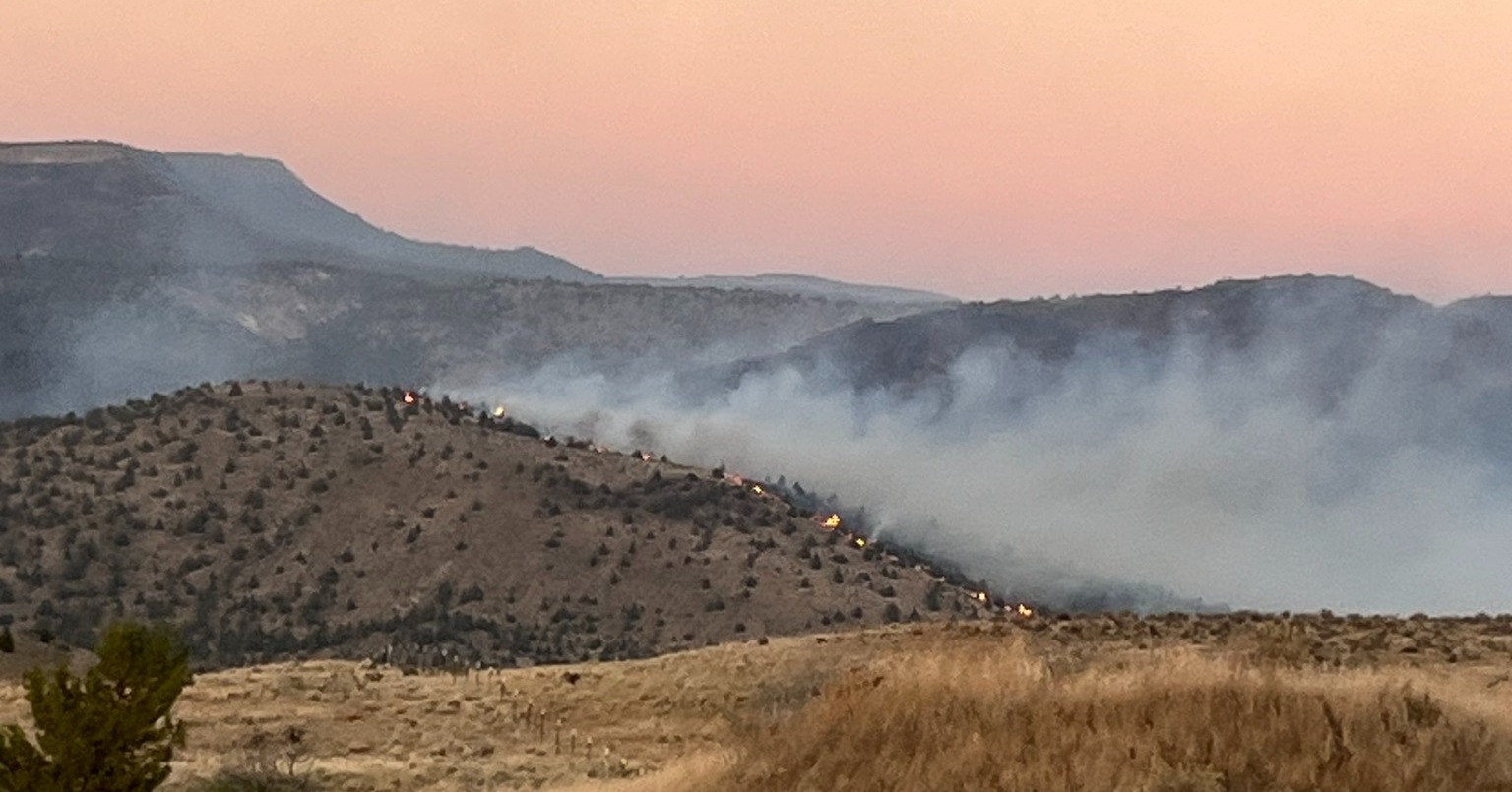Rebuilding spotted frog numbers, one genome sequence at a time
Published 5:45 am Friday, May 24, 2024

- The Oregon spotted frog.
Brome McCreary was right on time.
The wildlife biologist with the U.S. Geological Survey had arrived at a rendezvous location in the Deschutes National Forest to pick up precious cargo and take it to laboratories in Corvallis.
Trending
That cargo was in the hands of Jennifer O’Reilly, a wildlife biologist with the U.S. Fish and Wildlife Service. It consisted of a dozen or so clear plastic vials with blue screw-on caps, each one filled with a gelatinous substance encasing tiny black dots — Oregon spotted frog embryos.
The vials, packed into a zip-close bag, were handed to McCreary on this recent weekday at a clearing near the Deschutes River. He bundled them into a cooler in his Ford Escape and was off in a cloud of dust. Timing is of the essence. Once the embryos are taken out of the water and into a lab they tend not to survive for long.
Frog-embryo delivery is not uncommon this time of year in Oregon as biologists take advantage of the spotted frog’s brief breeding period. Their careful work with fragile eggs and subsequent research is being used to save a threatened species — this 4-inch frog has disappeared from 76% to 90% of its range, according to the U.S. Fish and Wildlife Service, a dramatic decline for a species once common in the Pacific Northwest.
Pulling a species back from the brink of extinction involves considerable on-the-ground work to restore degraded habitats and reduce threats or predators. In the case of Oregon spotted frogs, more water is being made available for their habitat in the Deschutes River. Campaigns are also being waged against bullfrogs, a nonnative species that preys on the smaller spotted frogs.
Science helps
But science is helping, too. Work is being done on front-lines to learn about the frog using radio telemetry.
Trending
“We literally zip-tied tracking devices on the frogs and tracked their movements to see how far they move in different areas as part of their life history,” said Bridget Moran, supervisor for the fish and wildlife office in Bend.
There is also work at the back end, in laboratories where their genomes are analyzed.
“We try to raise them until they hatch; then they will separate from the jelly and then we can get the individual and collect their genetic material,” said McCreary. “We are trying to catch that window.”
The embryos collected by O’Reilly were found at Little Lava Lake, the headwaters of the Deschutes River and a critical waterbody for the recovery of the species. Their destination was the U.S. Geological Survey Forest and Rangeland Ecosystem Science Center office and lab in Corvallis for curation and storage.
Read more: For Oregon spotted frogs in the Deschutes River, life finds a way
The eggs were driven there in the backseat, positioned in a way to limit jostling.
“The important thing is that they have the least amount of impact and they are comfortable,” said McCreary, referring to the embryos.
Curation is a multistep process. It includes preserving the sample, barcoding the embryos into groups by site and population, and mapping the location in the freezers or storage.
Later, the samples will be shipped to Colorado State University for sequencing and analysis. Understanding the spotted frog’s genetics helps biologists conserve the species and may one day play a role in boosting their numbers.
Genetic variation
Along with samples from other areas in the Upper Deschutes Basin, the eggs are used to identify genetic variation and connectivity around the range of the Oregon spotted frog, something scientists describe as “gene flow.”
The genetic samples help determine how closely or distantly the frogs are related.
The spotted frog’s range is from Southern Oregon to British Columbia. Its population has dwindled in many areas but is stabilizing in the Upper Deschutes Basin, thanks in part to the Deschutes Basin Habitat Conservation Plan, a commitment by irrigation districts to conserve more water for spotted frog habitat.
Read more: Some spotted frogs in Bend’s Old Mill District are growing to supersize proportions
Frogs with low genetic variation are the most vulnerable to climate change or drought. Such frogs tend to be located in areas cut off from neighboring populations — isolated because water is no longer available to help them move.
This is when water managers can help. Their impact is especially large in the Upper Deschutes, which is manipulated by Wickiup Dam. By increasing the flow of water in the Deschutes River, frogs have a better chance to connect with nearby populations for breeding and diversifying their genetics.
“The frogs are using the river to move between sites,” said O’Reilly. “It’s a movement corridor. It helps to keep the populations connected.”
Opening bottlenecks
Frogs in hydrologically connected areas also do better during a climate crisis. When drought conditions ease, they can repopulate easier than frogs living in isolated areas. Moran said taking the genetic samples and mapping them out can show the location of blockages where frogs may need help.
“You don’t want to bottleneck. You want genetic diversity. You want to make sure you have variety so your animals can survive in case there is drought,” Moran said.
Genetic diversity and adaptability will help scientists if or when they decide to move frogs around within the Upper Deschutes Basin, said Moran.
“If we are going to move frogs around, we want to know, are they already related?” Moran said. “We may consider something like translocation to introduce genetic variety back into these populations, but management actions are not pre-determined without having an understanding of the genetics.”
Read more: Climate change becomes latest threat to embattled Oregon spotted frog
Scientists say genetic diversity helps keep populations more resilient and adaptable to environmental changes, including climate change.
Because restoring Oregon spotted frog numbers in the Upper Deschutes is complex — involving water management, genetic surveys and habitat restoration — recovery has become an all-hands-on-deck effort. Moran said the groups involved frequently consult one another on what steps to take to benefit species’ habitat.
The hope is that the combination of tools will show results. Collaboration will test what is possible.
“There are a lot of things that go into spotted frog recovery,” said O’Reilly. “We are working with a lot of groups on this issue. There are many pieces to the puzzle.”
A threatened frog
Oregon spotted frogs (rana pretiosa) live year-round in lakes, ponds, wetlands and floodplains — water is essential to their lifecycle. They are found in small areas ranging from the Klamath Basin in the south to British Columbia in the north and have been removed from California.
The species was federally listed as threatened in 2014 under the Endangered Species Act. Its decline is primarily due to habitat loss and invasive species, including the American bullfrog. The National Wildlife Federation describes it as one of America’s 10 most-threatened frogs and toads.








